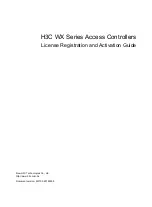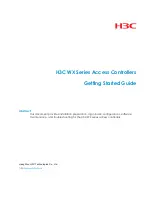
L-VIS User Manual
25
LOYTEC
Version 6.2
LOYTEC electronics GmbH
HTTP
: This method uses web services to communicate with the device over a
single port (usually port 80). The device must be running firmware 4.6.0 or
newer. Since the same port and protocol is also used by the Web-UI, no
additional setup in the firewalls of PCs or routers is necessary. Devices which
support encrypted connections via SSH (see below) also support encrypted
connections via HTTPS (enable the option to use a secure connection together
with the HTTP option). Note that this connection method requires the web server
and the application process to run and be responsive to web service requests.
SSH
: All devices except the 5” models LVIS-3M100 and LVIS-ME200 support
encrypted connections via SSH (enable the option to use a secure connection but
do not enable the HTTP option). In this case, only one TCP port (usually port 22)
is used for the entire communication between the PC and the device. This method
can be used in cases where the web server of the device is disabled for security
reasons or the application is not responding to web service requests, rendering the
HTTP method unusable.
If NAT routers or firewalls are located between the PC and the device, the SSH and
HTTP/HTTPS protocols are strongly preferred over FTP/Telnet. Check your firewall rules
if necessary. Note that SSH and HTTPS connections are not possible for the LVIS-3E100
and LVIS-ME200 devices. Use HTTP for these devices, or make use of a VPN tunnel if
connecting to a device in a remote building over the internet.
NOTE:
In case FTP is used over a wide area network and a connection is not possible, try to
change the passive FTP option. In some cases only one of the two methods is working,
depending on firewall settings and NAT router capabilities on both ends of the connection.
In the worst case, when the configurations on both ends are contradicting each other,
neither active nor passive FTP may be possible. If possible, always use encrypted protocols
like SSH or HTTPS for WAN connections and avoid FTP.
The IP address, network mask and gateway must be configured via the setup menu on the
device. The device must be restarted once for the new settings to take effect.
In the configuration software, the IP address or DNS name of the device can be used to
establish a connection. Each connection can be named and saved in a connection list, which
is stored in the system so that the list is available when the software is run the next time.
When connecting to devices running firmware version 4.0.0 or newer, the correct admin
password must be entered in this dialog to establish a connection for project up- and
download.
3.2.2 CEA-709 Devices only
Devices supporting the CEA-709 protocol offer more connection methods:
Through LNS
®
(software run as LNS
®
plug-in).
Via a CEA-709 connection (FT-10 or IP-852).
TCP/IP (as discussed in the previous section)
Each of these methods has some advantages and some limitations in what they can do.
Please see the following detailed description of the individual connection methods.
3.2.2.1 LNS
®
Connections
This method connects to the device from within the LNS
®
based network management tool.
The software is run as a plug-in and all communication with the device is done through
LNS
®
, meaning that you can use any network interface which is supported by LNS
®
.
















































